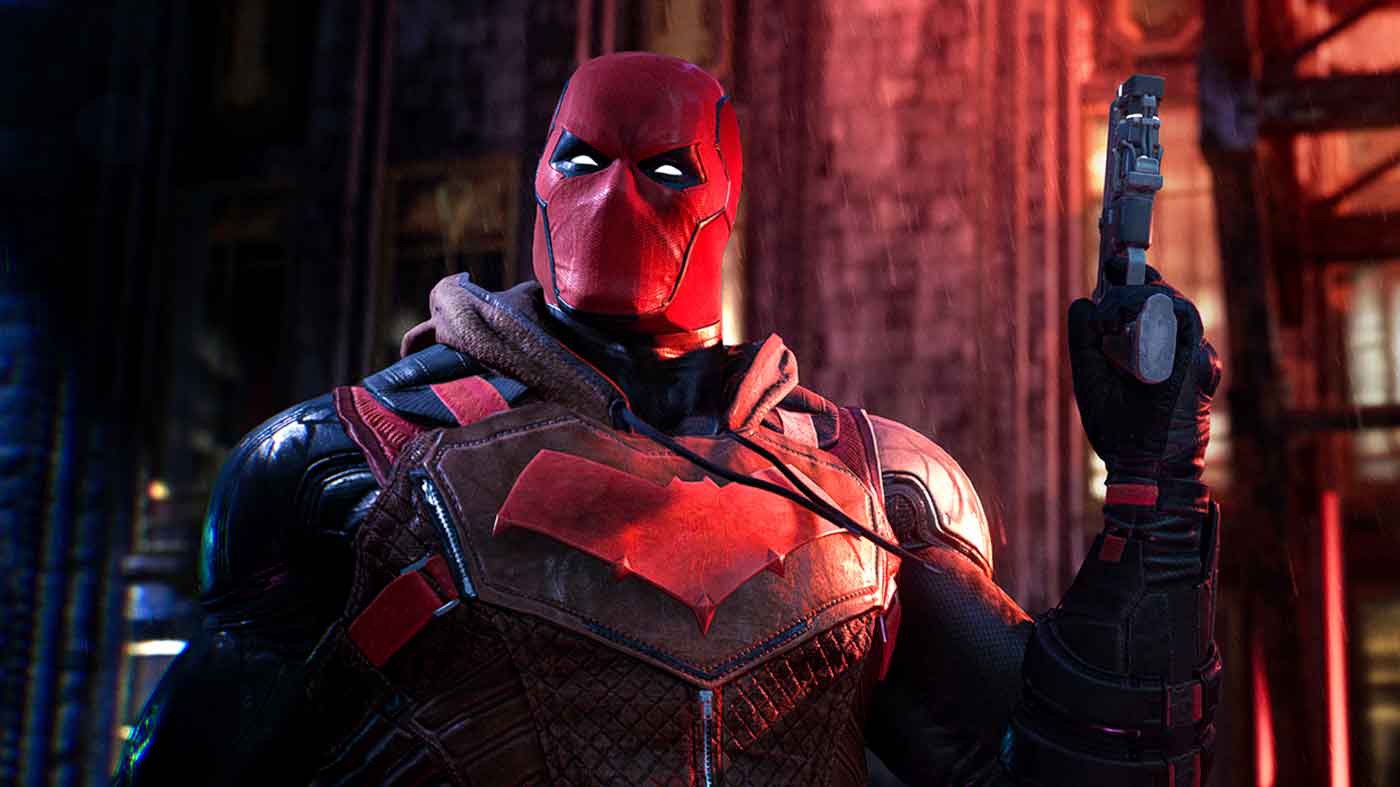Recently I seized the opportunity to swoop down and snatch up an interview with Gotham Knights Game Director, Geoff Ellenor. We spoke about the past, present and future of caped crusading.
Gotham Knights launches on October 25th for PS5, Xbox Series X|S and PC. The cheapest price is currently $79 from Amazon with free delivery.
First off, great choice with The Court of Owls as your Big Bad. It’s such a compelling idea to have a society so secretive they’ve stayed off the Bat Radar. Also, to task a disparate quartet of sidekicks with taking them down. Has that been a fun situation to craft?
Geoff Ellenor (Game Director): Absolutely it’s been fun since the very beginning. We were excited about the type of Gotham we wanted to make and started bringing all these cool ideas together. The Court of Owls as this sort of insidious “old wealth” seeking to control and corrupt was one of the points that we got excited by really early, and we’ve been rolling with that since the first two months of the project.
I’ve heard that a fourth skill tree called Knighthood eventually opens up for each character. interesting name. Does that mean that one of these playable heroes – or perhaps all of them – hopes to inherit the mantle of Gotham’s number 1 protector? Or are you trying to maintain an equality of importance for them all?
GE: One of the design decisions we made early on is that you can choose to play any of the four heroes — the four knights — and answer the challenge that we started the game with, creatively. [The question here is] what is it like to have to go out there and do Batman’s job if he’s gone?
The Knighthood skill tree kind of represents a mid-game stage where you’ve accomplished a certain amount of challenges and achieved a certain amount of competence and you can now start to take on the role of being a true protector of the city. We took a certain amount of the skills (and those sort of big capabilities of each hero) and put them in this tree, behind the Knighthood Challenges to give the player a sense of earning that power level, where you begin to really step into Batman’s shoes.
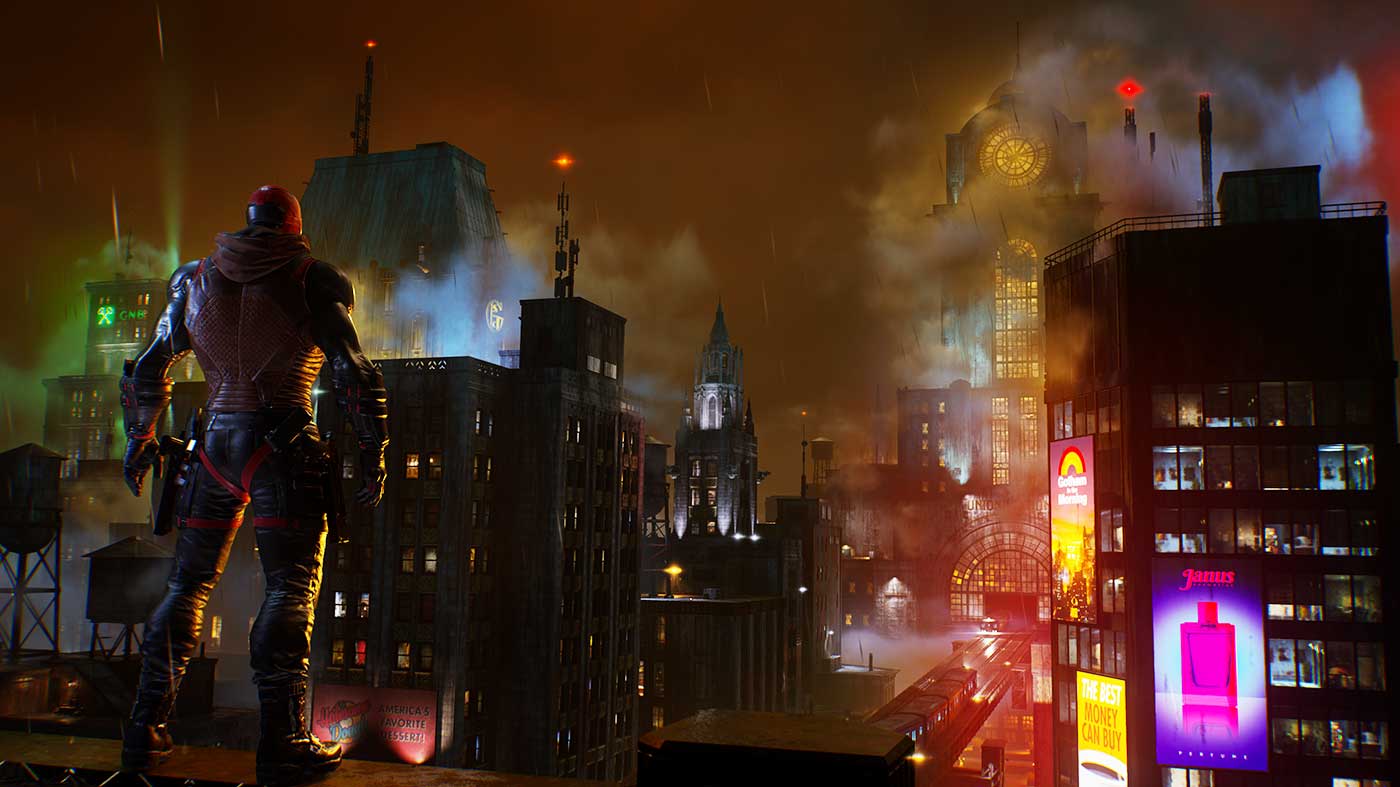
Has it been exciting to create your own fresh history for this universe? And how long a grapple line/leash have you had with DC?
GE: We’ve had a very very long leash to do what we wanted with this project, which is exciting. We started off very, very early with the idea that we were gonna make a Gotham City game and we knew right away, from just the different people that we had on the team and the skills that we had in the studio, that we were interested in. in making a game you could play with your friends.
Quickly, we started looking at this group of sidekicks that have trained under Batman that are all quite capable people but still less than Batman. Then, imagine what it would be like for them to have to protect Gotham on their own. All of our design spins out of that decision. We wanted everybody to have a certain degree of bat skills – everybody can ride the bat cycle, can grapple, is agile and can drop on an enemy and effectively take them out in silence. But that’s the moment where it starts to branch out and everybody grows into being a Gotham Knight in their own way.
The most recent GK news is the inclusion of Mr. Freeze and his pairing up with the hacking/safecracker goons called The Regulators. That’s an interesting pairing…
GE: The Regulator gang sort of spun out of one of our early creative exercises. When we started comparing them against the different villains, “Mr. Freeze + The Regulators” seemed to be an early synergy. Freeze is someone who has a very close relationship with tech – he’s a bit of a tragic figure, he’s dangerous and he uses technology in a very specific way to become more powerful and to exact his revenge from him and to express his anger at the world .
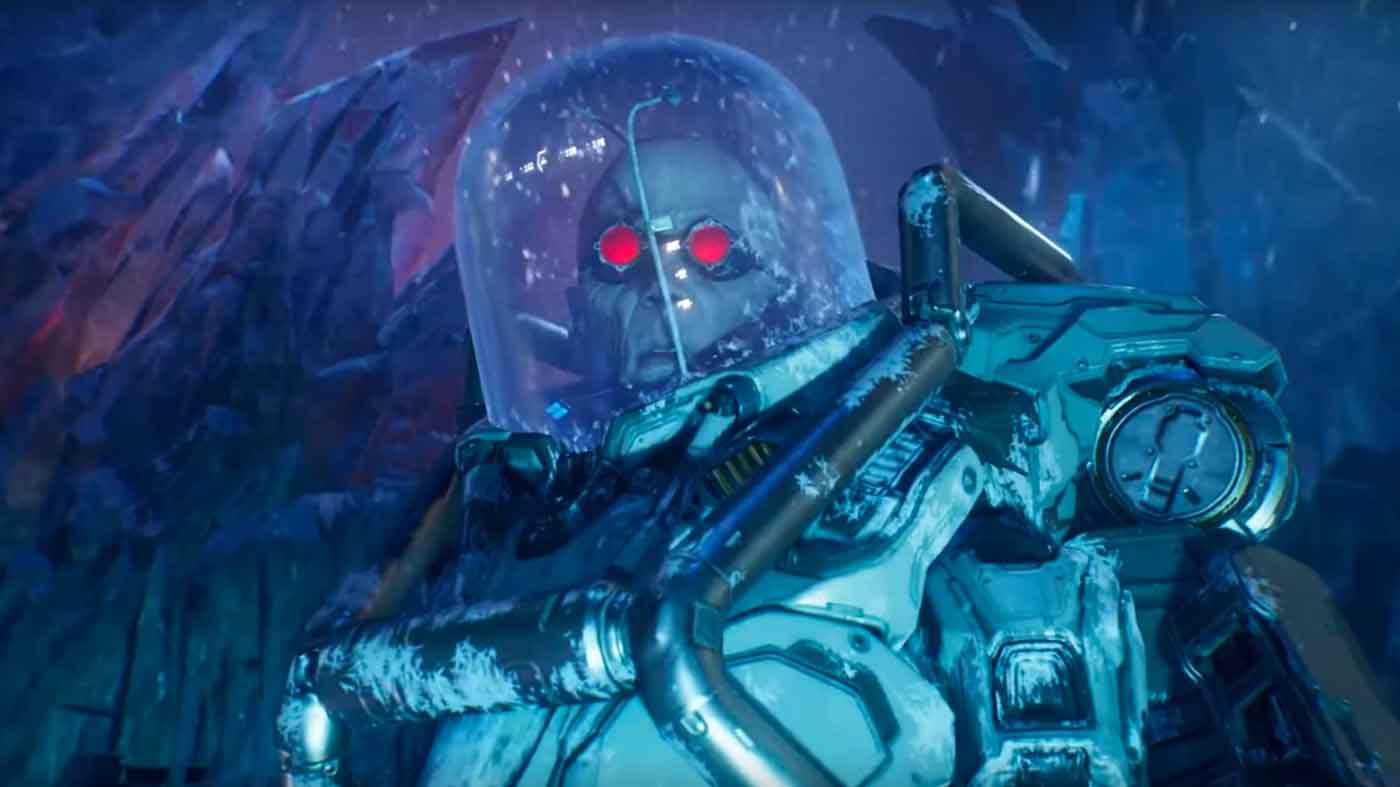
WB Montreal already has a great history with the character. I remember the Cold, Cold Heart DLC in Batman: Arkham Origins being a great piece of content…
GE: Yeah, that’s a long way back. There’s not even that many people [in studio] who actually [worked on Origins] still here. I think one or two of our core designers and our core animation staff worked on it. Ours was a really different take on Mr. Freez, particularly in the sense of who Freeze is. How he moves. How he fights. We’re pretty excited for you guys to see this one.
Also, it’s been revealed that you guys are using VR in your art pipeline. This is the first instance I’ve heard of such a thing. Can you expand a little on that?
GE: We got so blasé about it so quick, but I remember the day when we were all still working in the studio and I walked around the corner and there’s a 3D artist from the team sitting there with his goggles on and doing this kind of thing . I go to look around his shoulder of him and see if you can see something on the screen, and yeah — he’s making weapons [in the VR space]. That method just became such a fast pipeline for us. I mean, when we’re making new gameplay, new characters and new enemy factions and bringing in a whole new tech pipeline to build it, that’s real exciting.
I’ve seen footage where two of your demoers are being ‘spatial respectful’ of one another as they kick the snot out of goons. That said, how does GK manage a more chaotic duo — because it must be harder for the individual player to build meter and manage foes if their pal is ‘stealing hits’, yeah?
GE: So far as mediating the chaos goes, we think the design of the game works well with it. We have sort of an action-adventure brawler game with RPG elements and we’ve built our core combat around those constraints so that it works well when you play by yourself. But it works well on the network and with a buddy as well.
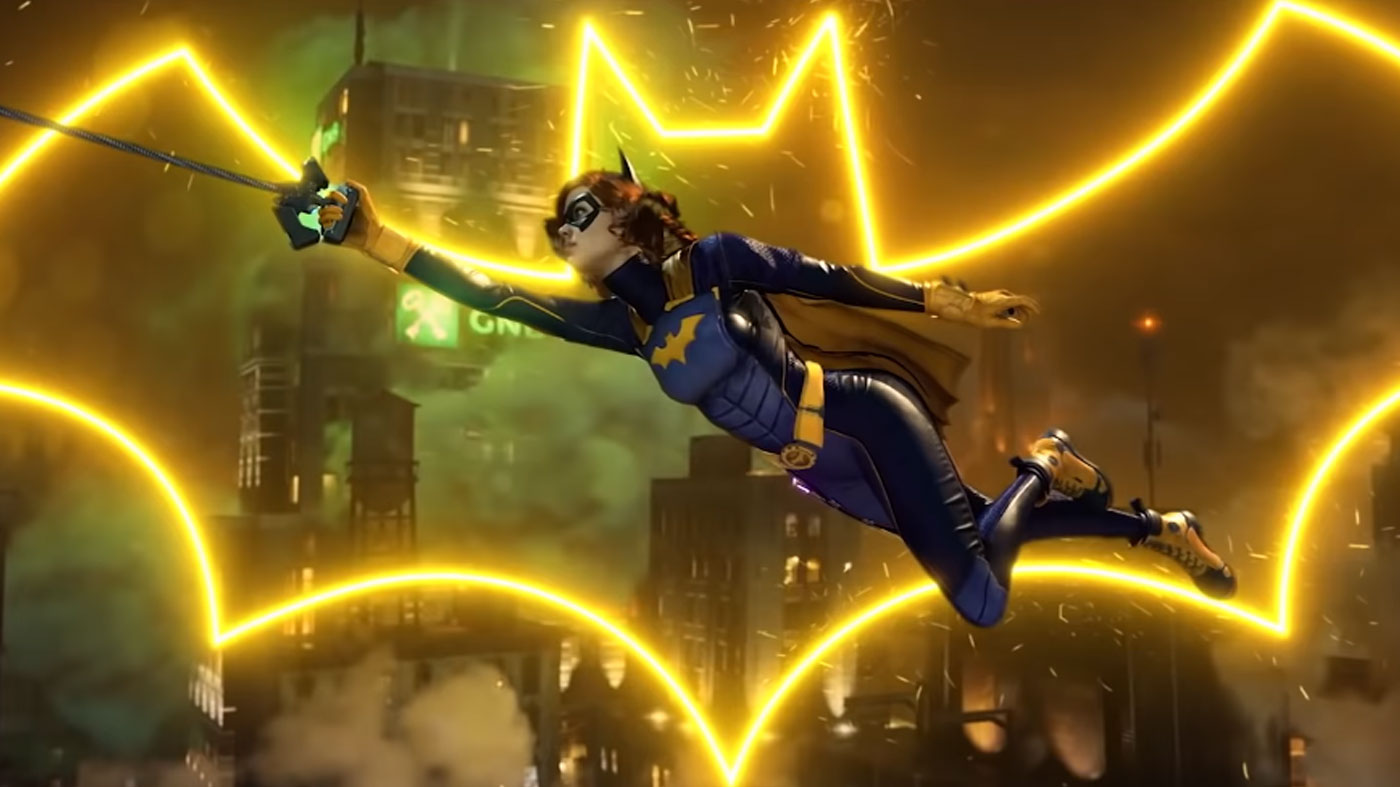
Also, how does the animation system handle player on player collisions and more importantly maintaining that pleasing flow of combat. Are we phasing through one another? Is there a quick animated moment where player A nimbly tumbles over player B?
GE: We don’t actually phase through each other. There’s also no friendly fire in punching and kicking, so we don’t create the situation where you accidentally knock down your buddy as you’re trying to perform moves. We do have cooperative grab strikes as well, to allow the player to have a conscious moment where it’s like “hey, take this one” and pass that enemy to your friend. [Generally speaking,] our mechanics do kind of favor playing on each other’s wing. And all of our story missions are kind of designed in a gameplay space that fits well with one to two players.
Just along that line of “potentially too many chefs in the kitchen,” how do you handle detective moments in co-op? Obviously some players are more intuitive than others when it comes to puzzling…
GE: You’re able to play a puzzle together at the same time at least for the type of, like, investigative puzzles. So if it’s the type of gameplay where you can walk around the room, obviously you can do that together at whatever speed you want. But yeah, if your buddy finds a clue, it completes your thing so you don’t have to also find the same ones.
[Other times] you’re sort of working in this close detective investigative interaction, and in those states when you play together you’re both seeing the same stuff. The first person to solve the puzzle advances the story, but there’s also little ways of sort of implied communication. For example: if your buddy selects a clue, you know it, so you’re like “oh they think that’s interesting.”

The Arkham series’ skin game was amazing, and judging from the 28 odd suits I’ve seen in GK you guys are on point already. That said, I’m not seeing any cel-shaded offering, a precedent that was set with Arkham City’s ‘Batman Animated’ skin…
GE: We’re offering a variety of visual styles, but they all kind of fit within the art style of Gotham Knights. For a bunch of reasons, some of them are stylistic, some are technical, but we really wanted to offer a ton of expression and always have you looking good. We have that kind of consistent high visual standard throughout the game.
[History-wise] there was enough for like four more games in terms of all of the different rad suits that these characters have worn over the years. Our character team has been amazing in bringing their own interpretation of some of the classics, plus a mix of crazy new stuff that nobody’s ever seen before.
Speaking of classics, Arkham Knight was a good sport in that it provided an ‘Adam West’ era skin. Would you consider a ‘Burt Ward’ Robin, rocking authentic 1960s budgie smugglers?
GE: [Laughs] We have not gone that way. I can confirm that here. But I think fans will be pretty happy with what’s there!
As we touched upon earlier, the last WB Montreal “bat title” was Arkham Origins. One common note about that game was that its sandbox was impressively large but also barren in places. Have you taken that historical feedback on board?
GE: Well, I mean, I am here really talking about the game we’re actually making this year. So Gotham Knights is not a reaction to past games. Or not a “oh, that other game got this feedback, so we should worry about it.” That said, Gotham City in Gotham Knights is a pretty dense city in terms of what’s happening. There’s always crime. The facts are always up to stuff every night. And the density of side activities and stuff to do is pretty high. So I think people will find there’s a lot of different dark corners to seek stuff to do in our city.
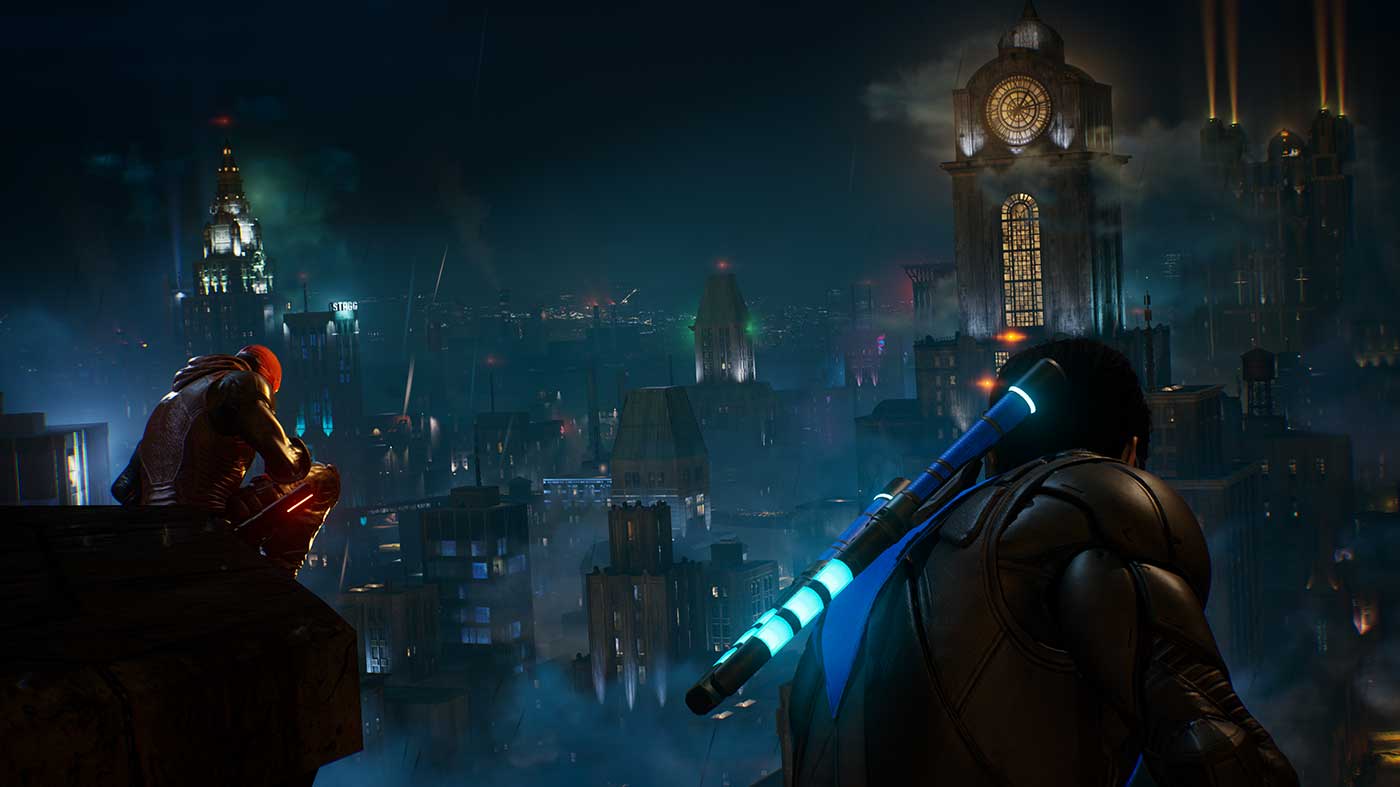
In combat it seems you’ve done away with the old combo timer and earnable, two-button finisher system. It appears your new focus is now on building a power bar to unleash hard-hitting abilities. I’m seeing very little penalty, combo-wise, for being hit – getting interrupted. Why did you choose to go this way?
GE: We decided that player’s mana, essentially, shouldn’t have a momentum penalty for taking hits, because you’re already losing health — you already have to worry about it. The player’s ability to gradually build momentum and use it counter was important because there are what we call ‘key unlock mechanics’ in the fight. There are enemies that do armored attacks or have a heavy shield, and it can really slow down the fight if the player can’t frequently use those powerful abilities in those cases. There’s kind of like a key and lock relationship between enemies providing a certain type of problem, and you have an ability that provides a solution. So you want to be able to use it frequently, or it becomes repetitive.
One of the things I loved about the Arkham series was battle damage across the entirety of the game. By the end, you looked like you’ve been through some shit. Does that feature here?
GE: No, we’re not. In some of those games — if my memory is correct — you are playing one very, very long night. In Gotham Knights, we have a sort of a daytime loop where you go back to The Belfry and have storytelling moments with the rest of the bat family.
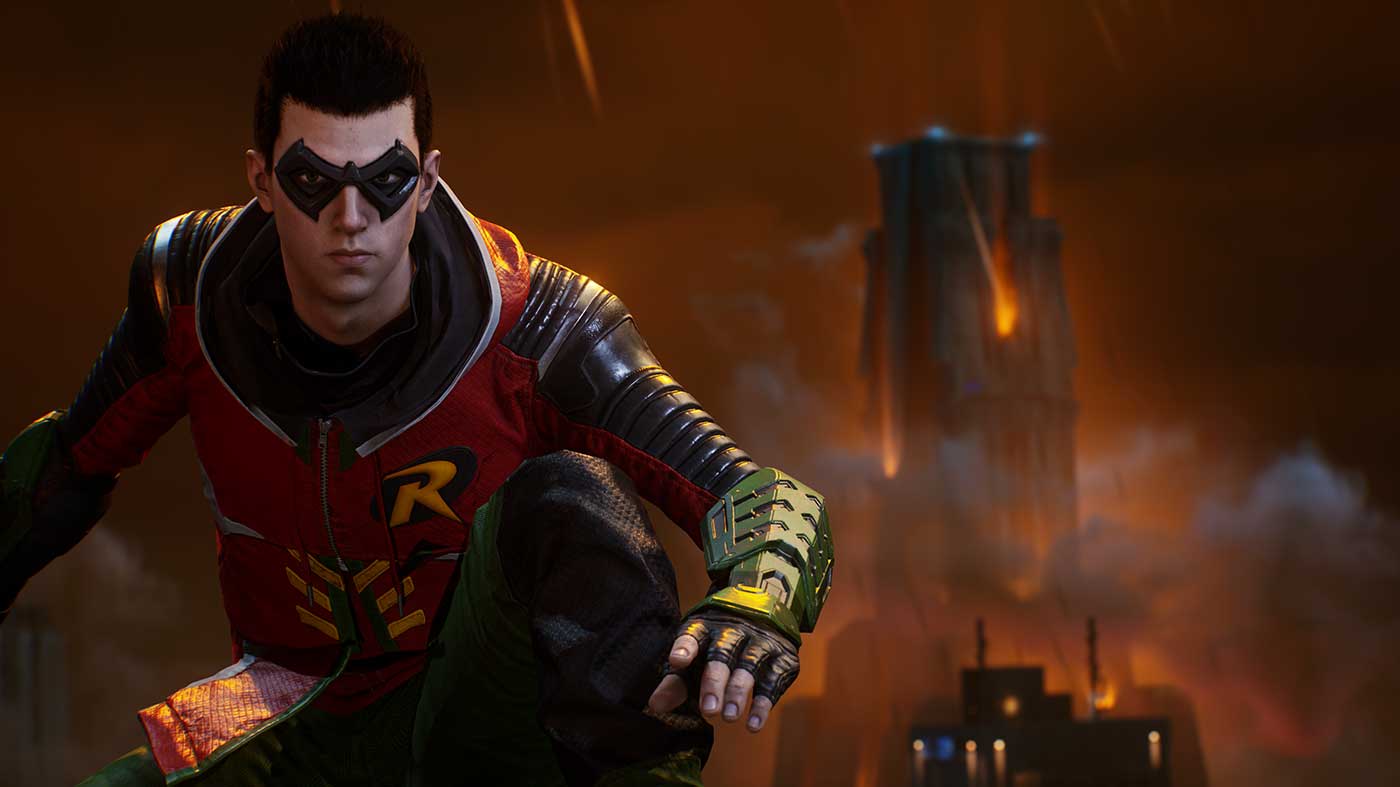
How does stealth work in co-op. If somebody blazes in, are you both insta-identified and locked into fisticuffs?
GE: If the enemies are aware of one of you, they’re aware of one of you. Obviously, enemies become more agitated when they’re alerted, so they can spot [that second] player more easily. They’ll have a larger vision capability and their animations change because they’re in combat, but they’re not immediately aware of anyone else until they actually have shared knowledge of the second player.
So from what little has been shown, it seems you’ve wall right back on the “hunt from the rafters” Predator gameplay. I’ve yet to see multiple goons get taken off the board by being punched out and turned into pinatas. Are we going to have the option, later in the proceedings, to disperse back upwards after an initial “swoop down strike”?
GE: Yeah, absolutely. That’s really kind of dependent on the environment that you’re in. Like with any video game, the level design dictates certain opportunities you have including the ability to return to the ceiling.
Geoff, thanks for your time.
Gotham Knights launches on October 25th for PS5, Xbox Series X|S and PC. The cheapest price is currently $79 from Amazon with free delivery.
